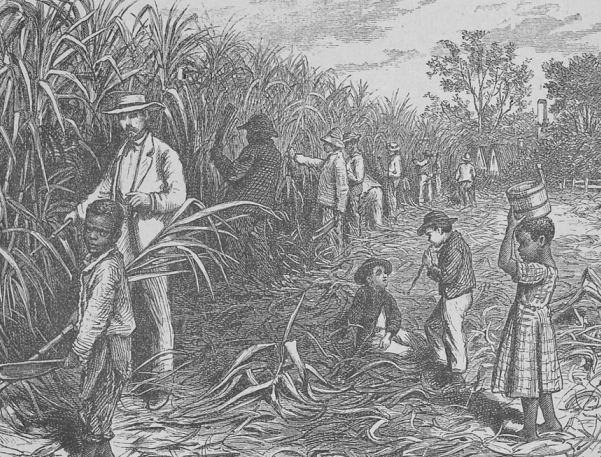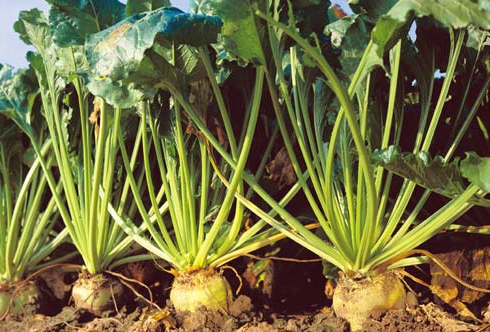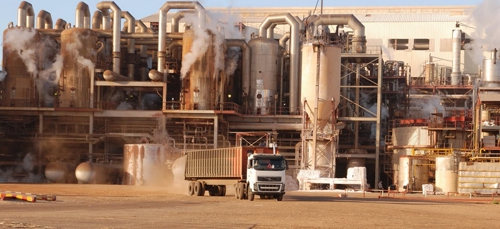Marmalade, gingerbread cookies, jam ... What taste would all this yummy have if it did not contain sugar? This product has firmly integrated into our lives, making it a little nicer and warmer.
Sugar in its composition contains sucrose, which gives it a sweet taste. This substance is used by our body to generate energy and as a material for the formation of many essential compounds. Its extraction is carried out from sugar cane and beets, for the production of still use corn, palm.
Mining history
India in the 16th century first began producing sugar on an industrial scale. In 1747, chemist A. Marggraf made a report on its presence in beets. But since the vegetable is not sugary enough, the discovery did not find practical application. After the death of the scientist, his student F. Ahard took up the unrecognized production. In 1799, he was able to get the first sugar from beets. Since 1802, he put production on stream.

The first mention of a sweet product in Russia appeared back in 1273. For a long time, due to the high price, it was a luxury item. In Russia, the first sugar factory was opened in St. Petersburg in 1719. Here, imported cane sugar was used, from which refined sugar was made.
Scientists have been looking for ways to get a cheaper product. In 1792, I. Bindheim conducted a series of studies of various sugar beetles. As a result, the sovereign allocated several acres of land for sowing beets as the best product for sugar production. Ya. S. Esipov developed a technology for producing sugar from vegetables with the purification of beet juice with lime, which was further used.
In 1802, a beet-sugar-alcohol factory was opened, which produced the product on an industrial scale, and the waste was processed into ethyl alcohol. The result of reflection on the question "How to refine sugar?" Yesipov built a second plant, but with a sugar refinery.

The technology for sugar production until the 30s of the 19th century included an acidic method for the purification of beet juice, which was developed by F.K. Ahard. But due to the formation of reducing substances, giving a large number of decay products, this method was abandoned. Improving the technology for cleaning sugar solutions was facilitated by the discovery by T. E. Lovitsky of the ability of charcoal to adsorb.
During the Great Patriotic War, the sweet industry suffered a lot of damage, but already in the 70s this loss was more than compensated. In 1975, there were 318 plants for processing beets into sugar. Factories are located in Ukraine, Kyrgyzstan, Uzbekistan, Transcaucasia. The largest plants were considered Lokhvitsky, Pervomaisk, Krasnozvezdinsky, Odessa.
Varieties of sugar

Sugar is the most common form of product. It has a crystalline structure, shine and a high level of sweetness. By refining sugar syrup with the inclusion of impurities in granulated sugar, refined sugar is obtained. Sugar crystals in it are of different sizes, saturated white. Refined in the form of cubes. Of the crumbs that remain after production, make powder. It is used in baking decoration.
Cast sugar is one type of crushed sugar, which is made by pressing very wet sand in the form of pieces from 5 to 60 g. Due to the rather complicated process of obtaining this type of sugar, it has gone out of production.
Rafinated sugar - what is it?
It is a product of crystalline, refined sucrose, which is available in the form of pieces or crystals.The aim of refining is to obtain a pure product by maximally removing impurities. The definition of refining itself says that this is the process of separating sucrose from non-sugars by crystallizing it in solutions.
The range of refined products is quite diverse. It includes pressed sugar, crushed in packs, pressed in small packaging, instant pressed, champagne sucrose, refined granulated sugar in bulk in bags and small packaging, as well as sweet powder in bulk.
To assess the quality of the product, GOST 22-94 is used. Requirements are as follows: taste is sweet, without taste; color is white, allows a bluish tint; flowability (without lumps), the solution of the product should be transparent. Defects, gray color, dark spots indicate non-compliance with the drying and pressing modes.
Sugar technology
In creating a product, there are several stages:
- Beet. First of all, the grown beets are washed and ground into thin plates. Then it is treated with hot water in diffusion drums.
- Sugar water. Due to diffusion, the transition from sugar and non-sugars from beets to water is carried out, which is further purified from impurities. To neutralize acids, precipitate various salts and coagulate proteins and dyes, milk of lime is used. Juice is also treated with carbon dioxide to precipitate excess lime.
- Massecuite. Next, sweet water is evaporated to obtain a thick syrup, from which sugar begins to crystallize, that is, massecuite is formed and crystals are separated from green molasses. The crystals are washed with water.
- Total. The end-point sugar production scheme includes drying, cooling and purifying crystals of ferromagnetic impurities and sugar lumps. When boiling massecuite first crystallization receive marketable sand. Green and white molasses go to boil massecuite second crystallization. As a result, sugar of the second crystallization is formed, which, due to the presence of an intercrystal film, is colored yellow. When centrifuging the massecuite of the 3rd crystallization, molasses is formed, which is a waste product.
Sugar production process. Features
The process of obtaining a product refers to a continuous, continuous process using automation of the main processes. Sugar factories are tightly tied to beet planting areas, as its transportation is economically inefficient. Most often, enterprises have their own fields for sowing. Production waste, pulp and molasses, are used as livestock feed or as fertilizer. Sugar production from sugar beets requires large areas.
Refining
The production of refined sugar begins with the dissolution of sand in water. Next, the resulting syrup is purified using adsorbents and ion exchangers.
The first two (sometimes three) cycles receive refined sugar. In the subsequent stages, yellow sugar is returned to the processing, as well as molasses, which is a waste.
The production of refined obliges to maintain a slightly alkaline environment of sweet solutions, which significantly reduces the inversion of sucrose. In order to hide the yellow tint, ultramarine, a blue dye, is used. Next, a bleached syrup is sent to a vacuum apparatus, where it becomes thicker. The resulting massecuite is subjected to crystallization in mixers.
Then it goes to a centrifuge, where it is bleached by adding a clerks with ultramarine. The resulting refined porridge is mixed and sieved. To create a lumpy product, this gruel is pressed and sent to dry for 8-10 hours. Refined sugar lump is made in the form of separate rectangular pieces. The thickness of the pieces can be 11 or 22 mm with a tolerance of 3 mm.
The production of molten sugar is very time-consuming and expensive, as a result of which this type is extremely rare.Nevertheless, the method of its production includes pouring the sweet mass into molds and the waiting time for solidification. Then, to remove molasses, it is poured several times with a solution of refined sugar. As a result, the frozen mass is taken out and cut into pieces.
Features of sugar packaging
Depending on the type of sugar, the type of packaging also varies. For the storage of sand, plastic, fabric, as well as paper bags are used. Refined products are packaged in paper bags and cardboard boxes. Powdered sugar lies in plastic bags, which, in turn, are packed in boxes. It is especially important to pay attention to air humidity indicators. So, for granulated sugar this indicator should not be higher than 70%, and for refined sugar - not higher than 80%.
Equipment for the production of
Sugar production involves several sets of equipment. The first row of machines used is the technique for preparing beets for its further operation. This includes a beet lifter, a hydraulic conveyor, a sand trap, a trap, a stone trap, a water separator, and a beetroot washing machine.
The main production complex consists of beet slicers, weights, a conveyor with a magnetic separator, a screw press, a diffuser, and a pulp dryer. Further, the process involves rows of filters, preliminary and main bowel movements, sedimentation tanks, saturators and sulfitators.
A large amount of energy is absorbed by a concentrator evaporator, vacuum apparatuses, centrifuges and mixers. The final complex is a vibratory conveyor, a vibrating screen and a drying and cooling unit.
Union of sugar producers
In 1996, the non-profit organization SOYUZROSSAHAR was established. The company coordinates and protects the entrepreneurial activities of members of the Union, develops development programs for the sugar beet complex, helps strengthen the unifying ties of sugar factories and many others.
Since 1997, the organization has been publishing the SOYUZROSSAKHAR Bulletin. It provides a complete overview of the product market in Russia and in the world, current news of the agro-industrial complex of the Russian Federation and the CIS, data on the growth and sowing of sugar beets, regulatory information and so on. Twice a month, information is updated.
The Union also holds annually various seminars and conferences, fairs and exhibitions to exchange experiences. For example, in 2014 the “Technological Club of Sugar Producers of the Customs Union countries“ Club of Technologists ”seminar, the 3rd joint conference of the International Organization for Sugar and the Association of Sugar Producers of the Member States of the Customs Union“ CIS Sugar Market 2014 ”and other events will be held. Thus, the production of sugar includes many features, complex technologies.
Once again about sweets
So sugar is a high-calorie product. It lacks vitamins, fiber, minerals. This family includes glucose, fructose, sucrose, lactose, maltose, stachyose, trehalose and galactose. Only glucose, sucrose, fructose and lactose carry nutritional value.
Sucrose is a disaccharide whose molecules are composed of glucose and fructose. To meet this carbohydrate in its pure form in nature is almost unrealistic. As for glucose and fructose, they are found in large quantities in fruits. Fructose can be safely consumed by diabetics, since insulin is not required for its absorption. Dairy products contain milk sugar called lactose.
About the benefits
Sugar (sucrose), once in the body, is broken down to glucose and fructose. Glucose is the main source of nutrition for the brain. It is also necessary for the liver, as it helps it to properly fulfill its barrier role. For people suffering from kidney failure, liver disease, jade, cholecystitis, sucrose is very useful and vital.
Sugar has the ability to fill the human body with energy.If you really want to eat, and there is still a lot of time before eating, but you need to be in shape, a spoonful of sugar will give a person extra strength.
About harm
Blood sugar normalizes insulin, which is produced by the pancreas. If the level is constantly increasing, then this can lead to a loss of gland performance. This leads to a lack of insulin, and sugar fills the blood, which leads to diabetes. Excess sucrose leads to a violation of lipid metabolism, which significantly affects the figure. At the same time, the level of cholesterol increases, which makes the walls of the vessels permeable, and therefore sclerotic phenomena develop. Also, a large use of the product affects tooth enamel, destroying it.
"Golden mean" in use
No matter how trite it sounds, but there should be a measure in everything. If you adhere to a diet without sugar, then you need to count calories not only those that come with tea or coffee. Sugar is found in bread, juices, cereals, pasta, even in sausage.

According to the results of numerous studies, scientists have decided that the rate of sugar intake is 10 teaspoons of this element. Of course, the quantity is considered not only in its pure form, but also the content in other products.
It is good to replace regular sugar with brown, which contains useful substances and minerals. Also an excellent substitute is honey, which contains fructose. But it is better not to use sweeteners instead of a product, since they can cause great harm to the body.









